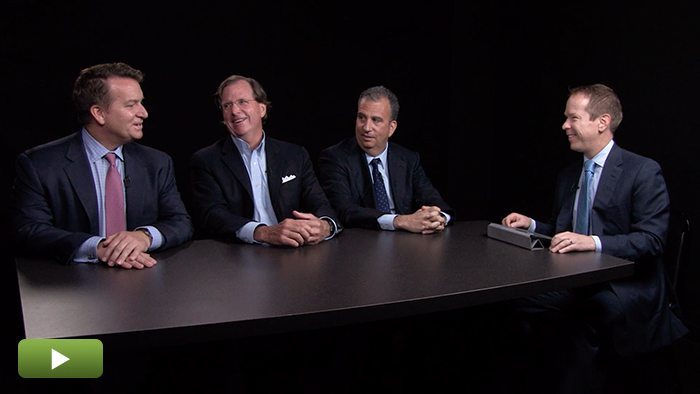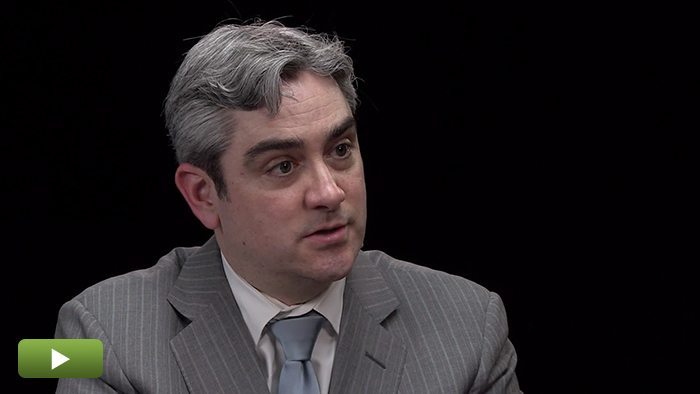Accuracy: Challenging but Imperative
Providing accurate information to LPs has never been more important, or more challenging, given the huge information demands from investors and increased complexity of running a PE firm, according to experts from MatlinPatterson, Castle Harlan, and Gen II Fund Services.
Transcript Download Transcript
Accuracy: Challenging but Imperative
Building a Better PE Firm
David Snow, Privcap: We’re joined by Steve Millner of Gen II Fund Services, Howard Weiss of Castle Harlan, and Cameron Hillyer of Matlin Patterson. Gentlemen, welcome to Privcap today. Thanks for being here.
We’re talking about the fact that LPs are increasingly interested in learning about the integrity of the back office of the private equity firms with which they partner. Let’s talk about an important sign that there is a strong back office: the consistent accuracy of the information given to the limited partners.
Starting with a question for Howard. Should limited partners be asking their GPs if they can verify how accurate and consistently accurate this information is that they’re giving you, given that (a) private equity math is very challenging and (b) every partnership has its own rules for calculating that math and you’re someone who deals with that math on a daily basis?
Howard Weiss, Castle Harlan: They have every right to determine whether the information we’re giving them is accurate. But, as you point out, this is not only math. A bigger part of it is understanding the limited partnership agreement, how IRRs are calculated, how a waterfall is done, and how fees get charged inside the waterfall. When you present that to the limited partner, they’re going to ask the questions. For them to come in to find out if your Excel spreadsheet or your software package adds the numbers right, is going to be missing the point but that’s going to be the forest from the trees.
Snow: Cameron, are you finding that LPs increasingly are interested in how you make sure that all the information you provide to them is accurate?
Cameron Hillyer, Matlin Patterson: Even outside the so-called “private equity math,” any small mistake has the potential to harm a firm. It reminds me of a Warren Buffet quote where he said, “It takes 20 years to build a reputation and five minutes to ruin it.” There are two things to consider here: one is the people and the culture of the firm and two is your controls and processes.
On the culture front, you can’t monitor everything that happens in a firm, but you can control the culture of the team. We try to bring together people who are thoughtful and have strong intellectual curiosity and all the personal and professional characteristics to be part of the team. When people know when to elevate an issue or that, if there may be an issue, it gets appropriately elevated. That mitigates risk for you as a firm.
Weiss: That’s a good point because we’re not a big office, but we have a half a dozen people. Nothing goes out without someone else checking it. The person who’s checking it can be junior to the person who did the work, but you need another set of eyes and the smell test is so important. So much could be found because there are times when someone can walk in and show me something and I’ll say it can’t be right. If the IRR was this three months ago and nothing changed, it can’t change by that much. That’s the importance of checking the numbers.
Millner: People trust the sponsors to manage their money. One way that trust is manifested is whether the information they’re getting is accurate. If there’s an inaccuracy, you can appreciate how one’s mind can start to wonder, “If that’s not right, what else isn’t right?”
No one can go down that path today. All good firms have to have a very rigorous… we call it quality control, but it’s exactly as Howard and Cameron described it. You need a culture that says, “Nothing’s going out of this firm without us taking a good hard look at it.”
Snow: What are some examples of types of information where even a small mistake can end up having long-lasting repercussions or causing reputational damage? There’s IRR calculation, there’s waterfall. What are some other examples of accuracy problems that would be regrettable?
Weiss: I thought of one big inaccuracy we discovered that was nobody’s fault. We had gotten information from one of our limited partners and their IRR calculation was vastly different from ours for a short period. For a quarter, one distribution can make a big difference. We were concerned. Again, we have our numbers, they have their numbers. We got their numbers and we were able to find out that when we sent out the money two days before the end of the quarter, we took it out of our capital account. They got the money a day into the next quarter. They were not including the funds in the quarter, but they were using the lower capital account. That was a major discrepancy, but the client was mistaken in the way he handled it. But that happens.
Millner: I’ll give you a little levity. Here is a fun example we got to see. We were pitching a client who ultimately decided they wanted to do the work internally. It was a brand-new fund; their first capital call. One of the partners in the firm delegated the responsibility to make a capital call to one of his assistants. His assistant proceeded to send out a capital call for 100% of the money.
Snow: Of the fund.
Millner: Of the fund. So the entire fund was called on day one. It was clearly a mistake. The good news is we won that assignment shortly thereafter.
Hillyer: From an LP’s perspective, being able to look at something like your valuation policy and how consistently that’s applied over time gives fairly good insight into how credible you are as a manager and how you compare to other GPs.
Millner: Once in a while, The Wall Street Journal will write a piece because, as you know, there are more and more club deals being done where there are multiple sponsors investing in a similar deal. An LP may actually be invested through multiple sponsors in the same company and, to Cameron’s point, you want to make sure those valuations are consistent. At our firm, we encourage our clients to talk to their cosponsors to make sure they are all consistent because that makes for good press and it’s unnecessary.
Hillyer: There shouldn’t be two firms that have different valuations or even where the CFOs need to reach out to one another. There will be a valuation that will be done by an independent firm, again, because there will be so many more people and parties involved in this business as it grows. You don’t see that in the mutual fund business or as much in the hedge fund business. Why would you see it in the private equity business, to your point on the continued evolution?
Snow: A final question, as the requests for information continue from investors to their private equity partners and as even as ad hoc reporting becomes more common: is this going to put strain on the infrastructure of private equity firms? Might that lead to more mistakes or greater frequency of inaccuracies because these teams were designed to respond to less frequent requests are now getting far more?
Hillyer: It’s already creating a strain. The volume of requests from all LPs is just exploding and it’s not only on your quarterly valuations, but also every underlying portfolio company metric. There’s not a consistency and solution to that. Now, we’re starting to see a software-driven solution to this.
Weiss: Increased inaccuracies are unacceptable. That’s off the table. But Cameron’s right, we’re getting inundated with requests. That’s what we’re there to do and we do it. Steve probably will be a beneficiary to a lot of that, ultimately.
Millner: The requests have grown exponentially. Exponentially, David, in terms of the number of requests, the different types of requests. I don’t see that abating any time soon. The manifestation of that is we sometimes get called in, not by the CFO, but by the CEO of a firm who says, “I have a great CFO. I want them to go out and help us work on our portfolio companies. I want them to be thinking strategically. I need them to interact with investors but they are stuck behind a mound of paper in their office and they can’t get out.”
That’s one of the manifestations. They’re chained to their desks and they’re not able to provide the value to the organization that they otherwise need to be performing. That’s another way we’re starting to see this increased request of information and the effect it’s having on organizations.







